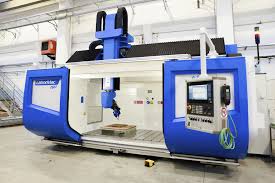CNC machining software enables the transition from digital design to precise part production through CAD modeling, CAM programming, simulation, and post-processing.
Each software layer supports a critical function in the CNC workflow—from geometry creation to machine-specific code output.
CAD Software for CNC Machining
CAD (Computer-Aided Design) software is used to create the digital blueprint of a part, defining its shape, size, and geometry.
Popular CAD tools:
| Software | Primary Use | Industry Example |
|---|---|---|
| SolidWorks | Parametric modeling, assemblies | Aerospace, medical, consumer products |
| AutoCAD | 2D drafting and basic 3D design | Industrial equipment, architecture |
| Fusion 360 | Integrated CAD + CAM platform | Rapid prototyping, small-scale production |
Use case: Engineers use SolidWorks to design a titanium orthopedic implant before transferring the model to CAM software for machining.
CAM Software for CNC Toolpath Programming
CAM (Computer-Aided Manufacturing) software translates CAD models into machine toolpaths and G-code.
Leading CAM solutions:
| Software | Functionality Highlights | Best For |
|---|---|---|
| Mastercam | Advanced 3- to 5-axis programming | Aerospace, mold & die, automotive |
| HyperMill | High-precision, complex surface machining | Medical devices, turbine components |
| Fusion 360 CAM | Cloud-based CAM integrated with CAD | Startups, prototyping, education |
Benefit: CAM tools control cutting speed, depth, tool engagement, and strategy to optimize part quality and machining time.
CNC Simulation Tools
Simulation software verifies toolpaths in a virtual environment to avoid collisions, tool crashes, and wasted material.
Key capabilities:
-
Material removal preview to visualize chip load
-
Collision detection between tools, fixtures, and workpiece
-
Cycle time estimation for quoting and planning
-
Live machine simulation based on real kinematics
Example platforms: Vericut, NC Simul, CAMplete
Use case: In the medical CNC machining field, simulation ensures zero defects during the production of complex surgical tools or implants.
Post-Processor Customization
Post-processors convert CAM toolpaths into G-code tailored to the specific CNC machine’s controller (e.g., Fanuc, Haas, Siemens).
Customization functions:
-
Adjust machine-specific syntax and formatting
-
Control coolant commands, spindle speeds, and tool changes
-
Fine-tune for 3-axis, 4-axis, or 5-axis configurations
-
Match output to shop floor workflow standards
Why it matters: Improper post-processing can result in incompatible code, wasted time, or machine errors.
Software Stack Summary for CNC Operations
| Software Type | Key Function | Examples |
|---|---|---|
| CAD | Design part geometry | SolidWorks, AutoCAD, Fusion 360 |
| CAM | Generate toolpaths and strategies | Mastercam, HyperMill, Fusion 360 CAM |
| Simulation | Validate and preview machining | Vericut, NC Simul, CAMplete |
| Post-Processing | Output machine-specific G-code | Custom post-processors per machine |
Final Thought: Why Software Integration Matters
Integrated software reduces human error, speeds up production, and ensures compatibility from design to execution.
Modern CNC workflows rely on seamless data flow across CAD, CAM, simulation, and machine code environments.









